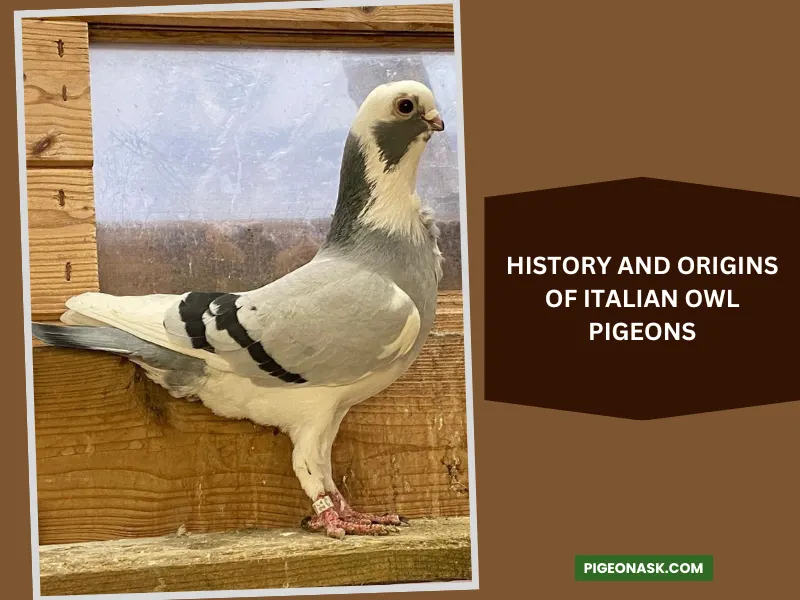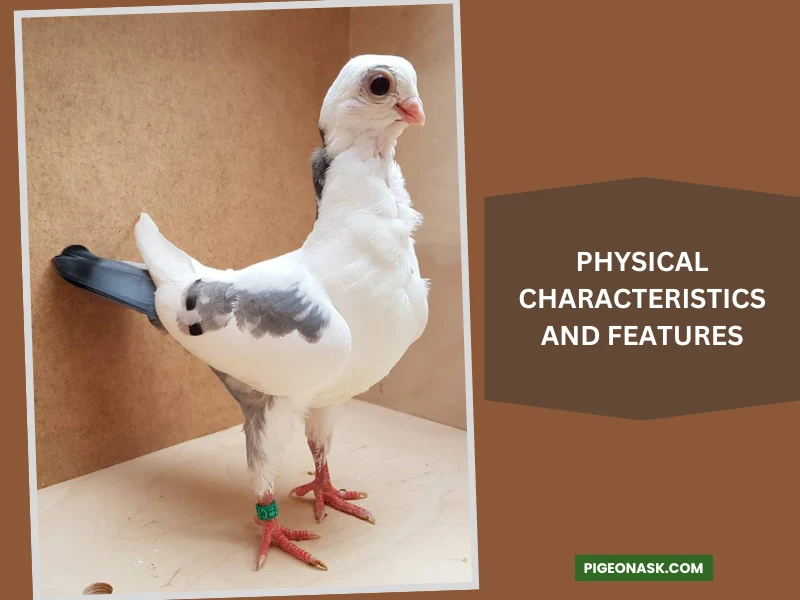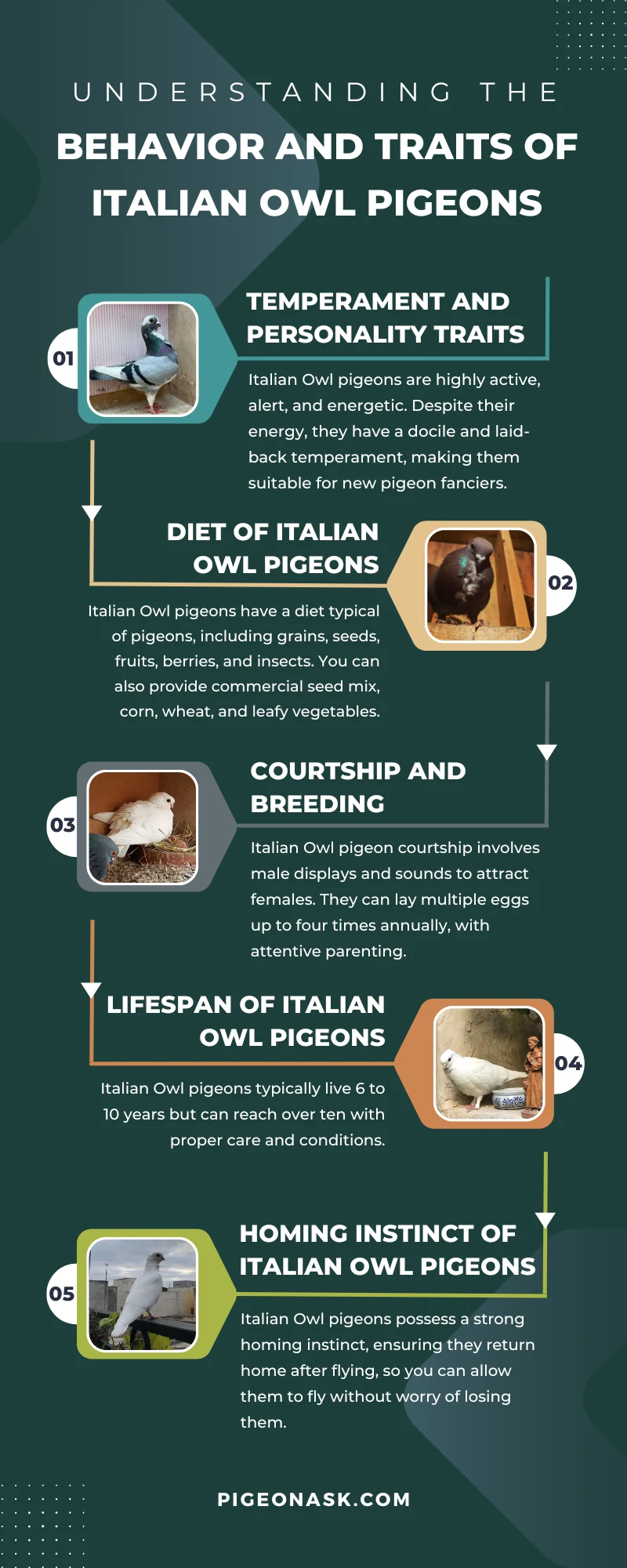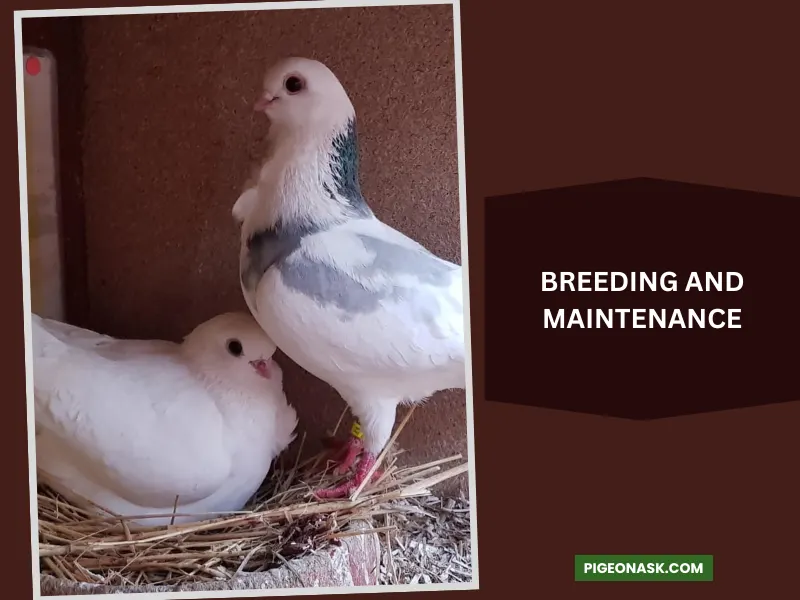Italian Owl Pigeon: History And Breed Guide
The Italian Owl is a fancy bird developed after years and decades of selective breeding. Like most fancy pigeons, the Italian Owl is also a descendant of the rock pigeon or Columbia livia.
However, this pigeon is smaller and raised primarily for flying and exhibition purposes.
In this article, I will explore all the Italian Owl’s features and characteristic traits to learn how to breed and raise them successfully.
I will mention the pigeon’s appearance, what to feed them, where to keep them, and much more.
Italian Owl Pigeon Profile
| Name | Italian Owl Pigeon |
|---|---|
| Scientific Name: | Columbia Livia |
| Common Names: | None |
| Origin: | Italy |
| Size: | Small |
| Weight: | 280 – 320 Grams |
| Lifespan: | 6 – 10 Yeas |
| Physical Features: | Flathead, colored eyes, straight beak, rounded breasts, chest frill, short tail, long legs |
| Temperament: | Laid back, easy going |
| Behavior: | Energetic, active, alert |
| Special Features: | Long featherless legs and horizontal stance |
| Breeding and Maintenance: | Easy |
| Common or Popular Varieties: | Blue, silver, red, and yellow, completely black, white, almond, Andalusian, and indigo |
Looking for more articles about pigeon breed:
Overview
The Italian Owl pigeon is a breed developed in different colors, including blue, silver, and yellow. Multiple patterns like grizzle and almond also exist.
While the bird is mostly for flying, it can adapt to exhibition and show applications.
History and Origins of Italian Owl Pigeons
Northern Italy is the origin place of the Italian Owl pigeon. As mentioned, this pigeon resulted from selective breeding that took decades.

While the exact date for its development is not easy to identify, the Italian Owl pigeon can easily be over a century old. After its development, fanciers imported the Italian Owl pigeon to Germany around 1880.
The following reference available is in 1939 when Italian representatives exhibited the breed to the World’s Poultry Congress in Ohio.
Currently, the Valencia Figurita and Italian Owl Club represent the breed in the United States, whereas the Sonderverein der Züchter Italienische Mövchen does the same in Germany.
Physical Characteristics and Features
Learn about the features of Italian Owl pigeons to identify them with ease. This information will allow you to choose appropriate specimens for breeding.

Size, Weight, and Body Structure
The Italian Owl pigeon is a small bird capable of weighing between 280 and 320 grams once mature. This bird has a flat head, slightly rounded at the front and the back.
Additionally, the eyes are blue for most variations except white or pied with black eyes.
Other features to highlight are the straight and stout beak and the rounded breasts showing a chest frill. Lastly, the tail is short, and the legs are long without feathers.
Unique Features
A particular feature of this pigeon is its small body size, featherless legs, and standing position.
Typically, this pigeon breed shows a proud horizontal stance, standing on the toes and looking like the pigeons will spring forward.
Common Variation
Fanciers develop this pigeon breed in many colors, including blue, silver, red, and yellow, in different patterns too. For example, other common variations are completely black, white, almond, Andalusian, and indigo.
Behavior and Traits of Italian Owl Pigeons
The following section details the usual behavior of this pigeon. Also, I will cover essential information about diet, breeding, and more.

Temperament and Personality Traits
This pigeon is very active, boosting high energy, and always alert to its surroundings.
The Italian Owl is an energetic breed, but it doesn’t have behavioral problems like aggressive temper.
As a result, these birds can be suitable if you’re starting your career as a pigeon fancier. They are docile, laid back, and easy to raise.
Diet
The diet of an Italian Owl pigeon is the same as with other pigeons. You can feed them grains, seeds, and fruits. These birds also eat berries and can enjoy insects as well.
Additionally, you can feed the pigeons commercial seed mix, corn, wheat, and leafy vegetables.
Courtship and Breeding
The courtship of Italian Owl pigeons is similar to other domestic pigeons. It begins when the male shows bodily displays and makes sounds to attract the female.
If the female accepts the courtship, the pair mate and can lay a couple of eggs per clutch. This procedure can happen up to four times per year.
These pigeons are good parents, caring for the eggs and building nests to create suitable incubation conditions.
Lifespan
The average lifespan of an Italian Owl pigeon is between 6 and 10 years. Naturally, you must create the conditions and provide the essentials to ensure the birds live as long as possible.
Sometimes, the pigeons can live for over ten years.
Homing Instinct
This breed of pigeons has a strong homing instinct, allowing it to return home after taking a flight. Therefore, you can let the birds out to spread their wings without concerns about getting lost.
Breeding and Maintenance
Consider the following information to increase your odds of breeding Italian Owl pigeons successfully.

Some Tips and Considerations for Successful Breeding
- Get your Italian Owl pigeons from renowned providers, and make sure the birds are healthy.
- Select birds similar in color to achieve the desired offspring.
- Consider assigning a house for mated pairs and another for the sick or odd birds.
- If you notice signs of health issues like appetite loss, consult with a veterinarian.
- Avoid inbreeding by keeping related birds away from each other during breeding season.
Housing and Feeding Requirements
The housing must meet requirements to guarantee the birds’ comfort.
For example, the housing must be dry and safe from weather conditions like rain and snow. Plus, you must include nesting materials like straws and leaves in the aviary to help them build nests.
Lastly, it’s necessary to include perches and plenty of ground area to let them fly and walk on the floor.
Feeding
You don’t have to follow a specific procedure to feed Italian Owl pigeons. Ideally, you must provide food rations every morning and remove the excess by night.
The food must be free of contamination, paired with fresh water to drink and wash themselves.
Final Word
The Italian Owl pigeon is one of the few fancy breeds developed for flying. Nonetheless, the beauty of this pigeon makes it suitable for other purposes as well.
Whether you raise this bird for flying, exhibition, or as a pet, the experience is satisfying for fanciers.
We loved the Italian Owl pigeon and all sorts of pigeons! Share your passion as fanciers by staying connected with us on Facebook, Twitter, and Pinterest!
